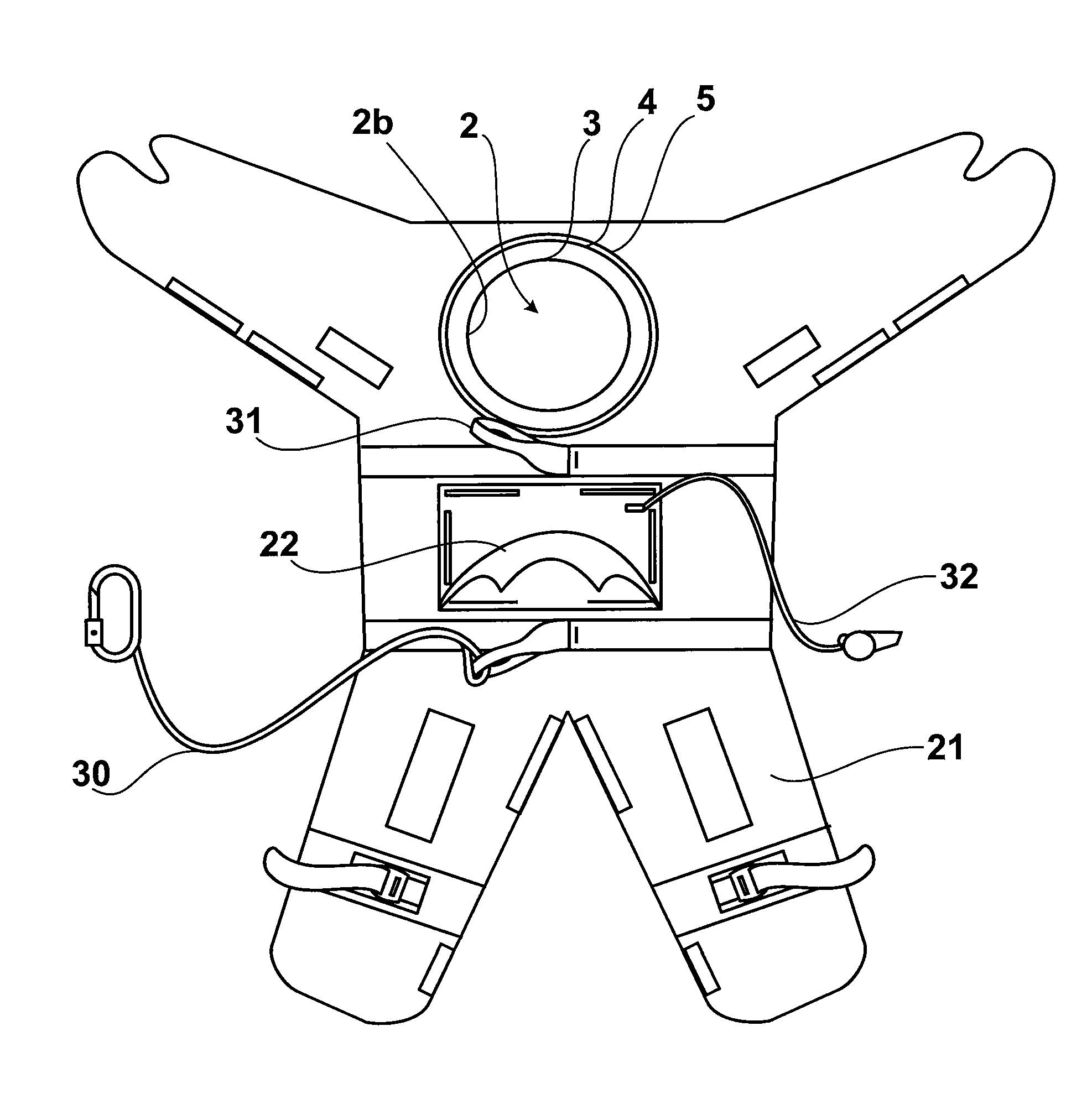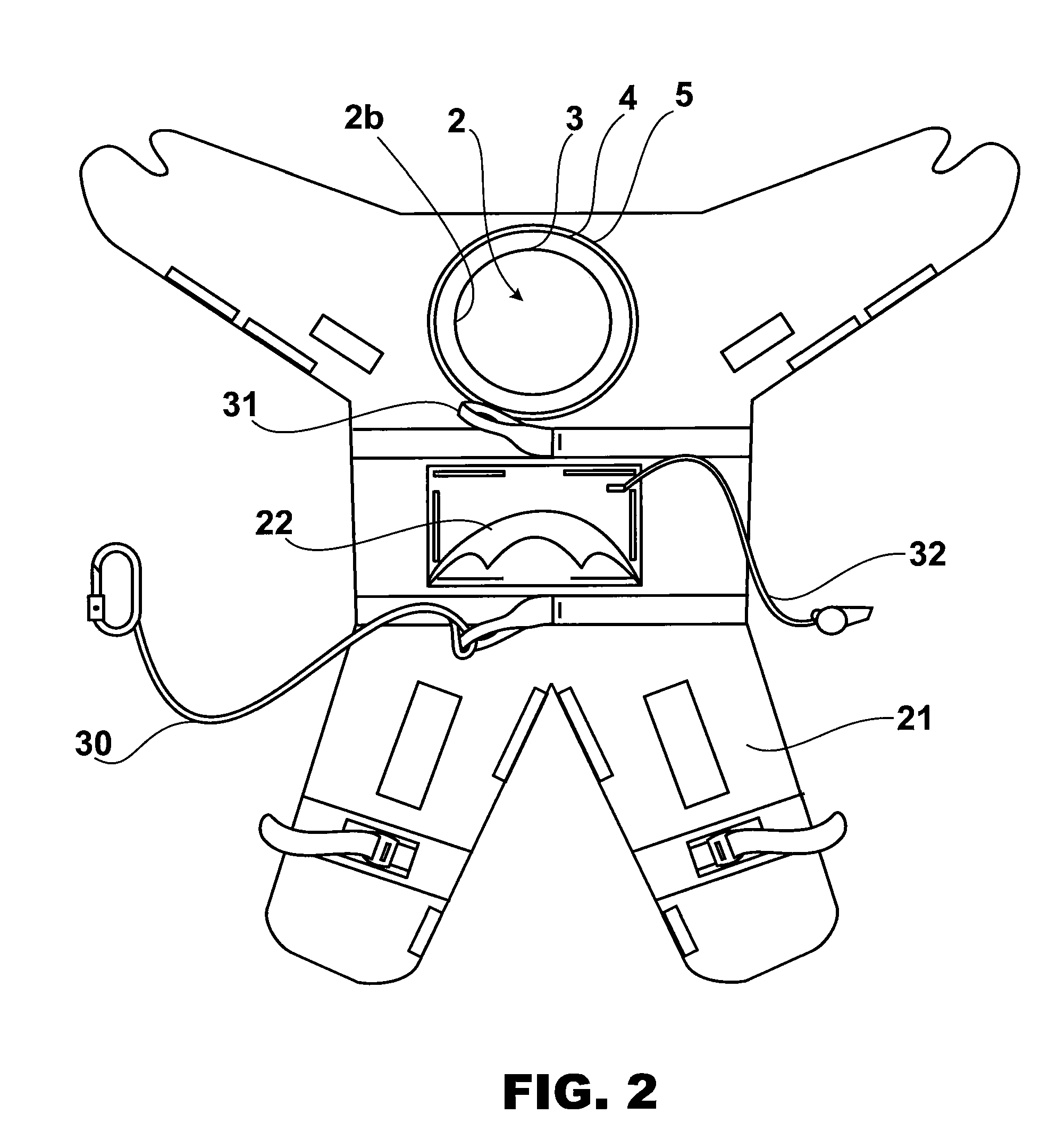Salvage suit for shipwrecks
a technology for saving suits and shipwrecks, applied in life-saving, fire extinguishers, vessel safety, etc., can solve the problems of not being thermo-insulating, blown up, and neoprene conventional suits do not protect the wearer adequately from low temperatures, so as to achieve the effect of faster wear and rapid evacuation of shipwrecked ships
- Summary
- Abstract
- Description
- Claims
- Application Information
AI Technical Summary
Benefits of technology
Problems solved by technology
Method used
Image
Examples
Embodiment Construction
[0126]In general terms, this invention relates to a salvage suit for shipwrecks that includes a loose body receptacle (2) that is capable of containing the shipwrecked body as a floating mini-cabin; this body receptacle (2) is limited by an inner cover (11) that, formed by plastic layers (12)(15)(14), is separate from the outer cover (20) by a hermetic air chamber (2a); the body receptacle (2) is accessed through the head opening (2b) in which we have a head sleeve (3) and an outer sleeve (4) that can be unfolded.
DETAILED DESCRIPTION
[0127]More specifically, this salvage suit (1) includes a receptacle (2) according to the anatomical form of the shipwrecked person. Notwithstanding this, it was conceived to be loose enough to let the wearer move inside said receptacle (2) that, consequently, is like a floating mini-cabin.
[0128]The suit sides (1) project a couple of top extensions that end in two close mittens (1a), while the bottom part projects a couple of suit legs (1b) that end in t...
PUM
 Login to View More
Login to View More Abstract
Description
Claims
Application Information
 Login to View More
Login to View More - R&D
- Intellectual Property
- Life Sciences
- Materials
- Tech Scout
- Unparalleled Data Quality
- Higher Quality Content
- 60% Fewer Hallucinations
Browse by: Latest US Patents, China's latest patents, Technical Efficacy Thesaurus, Application Domain, Technology Topic, Popular Technical Reports.
© 2025 PatSnap. All rights reserved.Legal|Privacy policy|Modern Slavery Act Transparency Statement|Sitemap|About US| Contact US: help@patsnap.com



